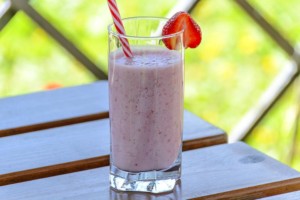 Breaking news.
Breaking news.
Probiotic biofilms grown with nanofiber membranes improved shelf life and survival of beneficial bacteria in fermented dairy.
Until recently biofilm on milk was associated with the formation of pathogenic bacteria, and scientists sought ways to eliminate them during food processing. However, a new study from Chinese researcher Meng-Xin Hu and colleagues at Zhejiang Gongshang University, explored how growing biofilms on thin sheets of nanofibers can be a mechanism for producing probiotic-delivering fermented milk products.
Hu and colleagues were able to create electrospun cellulose acetate nanofiber membranes as scaffold materials for the beneficial bacteria Lactobacillus plantarum (L. plantarum) to grow in a biofilm formation. They found nanofiber membranes proved to be an excellent scaffold for bacteria biofilm with high stability.
In comparison with planktonic bacteria, L. plantarum biofilms on nanofiber membranes showed excellent gastrointestinal resistance. Instead of decreasing, the number of viable cells increased after three hours digestion in vitro. The L. plantarum biofilm-integrated nanofiber membranes were used as reusable starter cultures for fermented milk production showing excellent fermentative ability and higher survival of L. plantarum during shelf life.
The viable cells in fermented milk remained at 11 log CFU/g throughout the reusable batches, which is far above the required value of 7 log CFU/g in commercial products. In addition, the produced fermented milk possesses shorter fermentation time and higher survival of probiotics during shelf life.
The results suggest electrospun nanofiber membranes are ideal scaffold materials for bacteria biofilms immobilization in biotechnology and fermentation engineering.
Findings were published in the Journal of Agricultural and Food Chemistry.
Breaking news, as seen in Nutraceuticals Outlook online, April 24, 2019.
